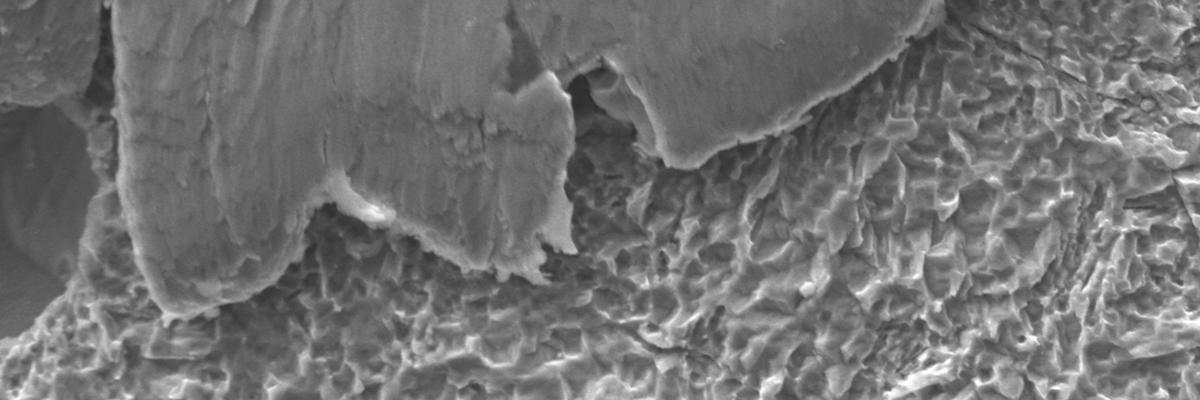Dynamic Crevice Corrosion in Total Hip Arthroplasty

Overview
It is known that most of the mechanical wear and associated mechanical film disruption that occurs in modular hip replacements in-vivo happens within a crevice-like geometry, e.g., at the head-neck junction or between the stem and cement. Thus far, laboratory studies on the mechanism of modular implant degradation have concentrated on either static crevice corrosion, pure wear or fretting corrosion. The small contact area in the commonly used pin-on-flat fretting tests and the out-of-contact time during the reciprocating motion of the pin would prevent the formation of a critical crevice solution inside the contact, limiting the applicability of their method. Figure 1 compares the dynamic crevice corrosion that occurs in head/neck junctions in the patients (Figure 1a) and the laboratory simulation testing (Figure 1b and c). It can be seen in Figure 1b that in conventional fretting and reciprocating tests, the out-of-contact time between the pin and the metal would lead to repassivation of the stainless steels’ surface. Additionally, the required critical crevice corrosion would not establish owing to the continued disruption. In the tribocontact used in this study, depassivation occurs within a crevice (Figure 1c). With the given rest time, the critical crevice solution evolves within the cavity and, hence, localized corrosion progresses.

Figure 1; a) Dynamic Crevice Corrosion within head/taper junction, b) conventional fretting corrosion tests, c) tribococontact used to simulate dynamic crevice corrosion in the laboratory.
Objectives
The objective of this study was to develop a methodology for simulating crevice corrosion under interrupted two-body tribocontact conditions. Type 316L stainless steel (UNS S31603) was used as the model alloy. The method was based on simulating daily life activities, whereby there are periods of motion followed by rest. In this way, the dynamic crevice corrosion behavior of Type 316L SS was compared with static crevice corrosion and tribocorrosion-only experiments to gain insight into the effects of the degradation mechanism. Worn surfaces and the surrounding areas were examined by optical profilometry and scanning electron microscopy (SEM) after exposure and the results compared to retrieved high nitrogen stainless steels (HNSS) modular implants to assess the efficacy of the new testing methodology at simulating real-life implant failures.
Why is it important?
Modularity in joint replacement surgery, referred to as arthroplasty, was introduced in the late 1980s. The widespread application of modularity is due to the intraoperative flexibility offered by multi-component designs. Despite its advantages, modularity is not without problems. Mechanically assisted corrosion, particularly fretting corrosion (a type of tribocorrosion , is the prevailing damage mechanism frequently found in retrieved modular devices. A primary concern associated with corrosion is the release of toxic metal cations into the body, which may lead to tissue destruction, causing component instability due to the lack of soft tissue constraint or component loosening due to osteolysis.
In this study, for the first time we defined the term Dynamic Crevice Corrosion which is the tribocorrosion within a crevice geometry. In this regard a unique test method was developed which will assist implant manufacturers, orthopaedic surgeons and biomedical engineers to assess parameters that lead to this type of degradation mechanism at the head/taper modular junctions.
Citation
Edgar Hornus, Ke Wang, Moreica Pabbruwe, Alan Kop, Chris Jones, Ashraf Salleh, Mobin Salasi, Mariano Iannuzzi, A new experimental method to simulate dynamic crevice corrosion in modular hip arthroplasty, Corrosion Science, Volume 190, 2021, P. 109704 https://doi.org/10.1016/j.corsci.2021.109704.

